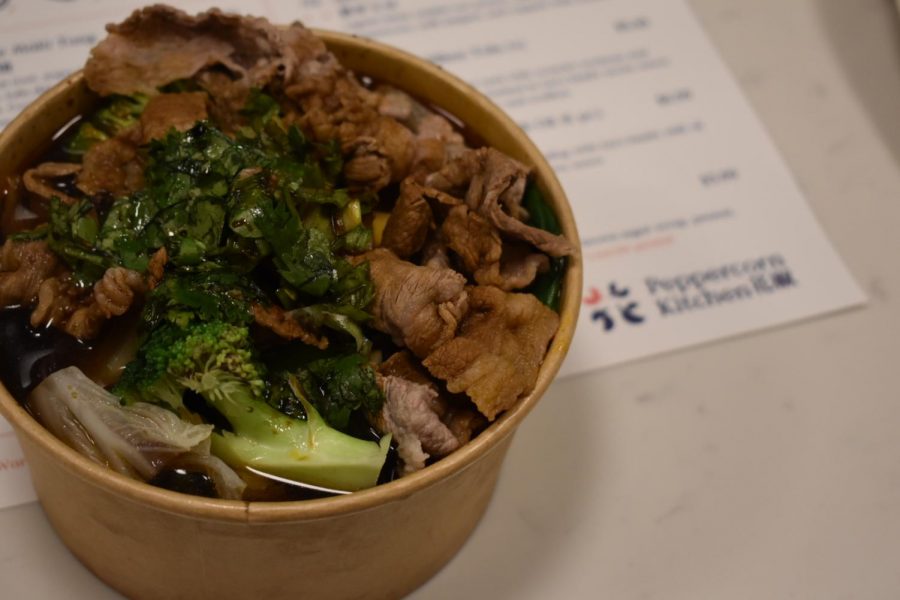Szechuan From Around the Block at Peppercorn Kitchen
Ma La Tang, or “spicy numbing hot (soup),” is Peppercorn Kitchen’s signature dish.
September 27, 2018
For many Americans, Chinese food means paper boxes, greasy spring rolls and cryptic fortune cookies. While most people in the United States have been feasting largely on dishes invented stateside, Chinese cuisine in New York in general, and in the East Village in particular, is transforming into something hyperlocal and modern.
What does modern Chinese food look like? If you’re Kirk Liu, the owner of Peppercorn Kitchen on Mercer Street, the answer is simple.
“That’s us and what we’re doing right now,” Liu said. Peppercorn Kitchen is a new face in the sea of Chinese restaurants surrounding NYU redefining what Chinese food in New York is.
Liu wanted to introduce a snapshot of China’s current food scene to New Yorkers.
“We want to create this image of what modern China looks like and we want to give the message that Chinese food can be modern and chic, while the flavor is still authentic,” Liu said.
The restaurant identifies as a fast-casual Szechuan restaurant — perhaps the only one in New York City. Szechuan food is one of the major regional cuisines of China, specializing in the feelings of numbing and spiciness. Peppercorn Kitchen specializes in Ma La Tang, a spicy soup reminiscent of a personal hot pot. Patrons also get to choose a protein from four options of beef, lamb, spam or fish.
“We don’t have anything that’s not spicy at all. [Because] that’s what Ma La Tang [麻辣烫] stands for. Ma [麻] means numbing, La [辣] means spicy and Tang [烫] means soup. Without [spice] it’s not Ma La Tang,” explained Liu.
The Ma La Tang was very filling, I ordered it mild — the lowest spice level — with beef, accompanied by an additional side of rice (that’s what they recommend if you’re really hungry, and I’m always really hungry.) I honestly believe it would have tasted much better if the spice level was higher.
In addition to the Ma La Tang, the restaurant rotates a small menu of Szechuan-inspired street food every few months.
Currently on their menu is spicy crinkle-cut potatoes which are seasoned with cumin, peppercorns, chili pepper and topped with scallions — the owner’s favorite snack item.
With its spicy kick and strong flavor, it’s reminiscent of Cajun fries. You can also try the Szechuan Silken Tofu or the Szechuan Jelly — a popular dessert drink of the region.
But it was the dumplings in chili oil that stuck out to me. Liu explained what makes them so different from the dumplings I’m used to.
“The difference between these dumplings and other places’ is that its sauce is sweet and salty at the same time, and has a pinch of garlic on top,” Liu said.
When I tried it, I understood. The dumpling’s sauce was really something I never had before, sweet but not overwhelmingly so, cut perfectly from and balanced by the presence of chili oil and garlic.
Even though this isn’t the most amazing meal I’ve ever had, in terms of speed, flavor, and proximity to campus, Peppercorn Kitchen is a winner in my books. It showed me new flavor combinations I haven’t thought about before.
Email Valerie Tu at [email protected].



























































































































































